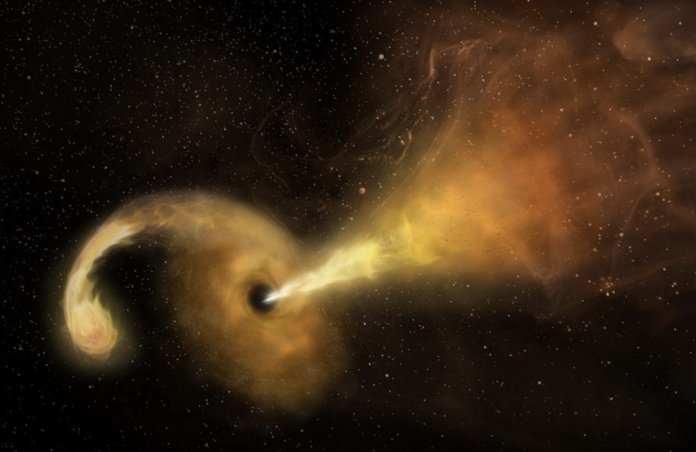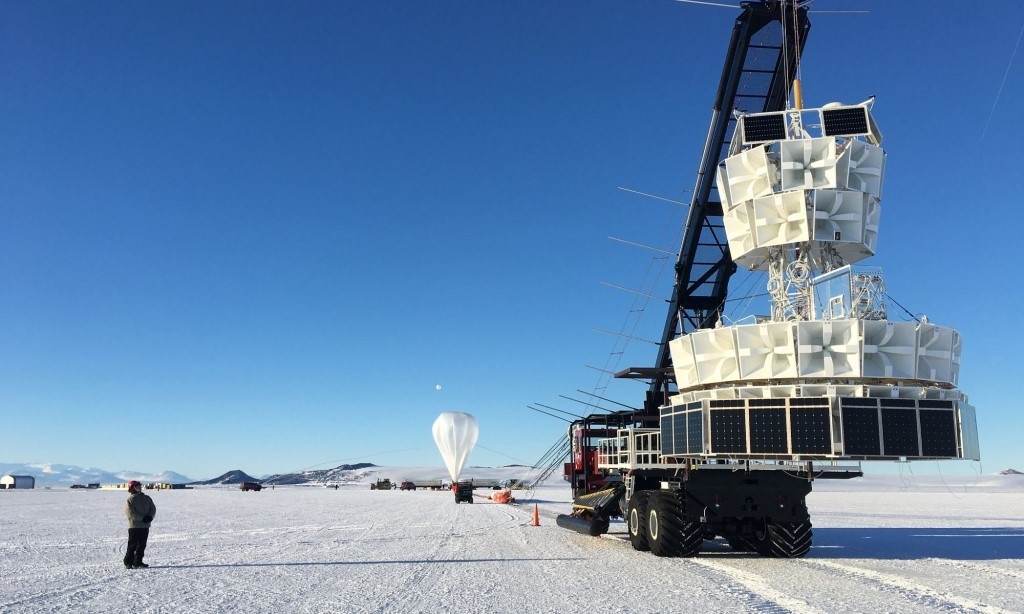High-Energy Neutrinos May Originate from Supermassive Black Holes

Astronomers may have finally discovered where some high-energy neutrinos come from—supermassive black holes.
Neutrinos are incredibly common—with billions passing through each of us every second—yet they’re still among the most mysterious particles in the universe. They have little to no mass and almost never interact with matter, making them rather difficult to study. When researchers are able to study them, the results are often head-scratching. High-energy neutrinos are even more elusive to study, but a team of astronomers analyzing data from a neutrino detector in Antarctica may have just discovered their true origins.
ANITA & IceCube
There are two neutrino detectors in Antarctica: the ANtarctic Impulsive Transient Antenna (ANITA) and the IceCube Neutrino Observatory. ANITA is a radio detector mounted on a balloon that detects neutrinos by observing the radio light created when they smash into the ice. The IceCube is buried deep underneath the ice to maximize its detection of high-energy neutrinos and filter out any other collision events (particularly from gamma rays). The IceCube Observatory has already detected numerous neutrinos crashing into the nearby ice, both solar (produced by the Sun) and extra-solar (produced by supernovae and gamma-ray bursts).

Image of the ANtarctic Impulsive Transient Antenna (ANITA). Credit: NASA Goddard
Earlier this year, ANITA detected high-energy neutrino particles “hundreds of times more powerful than those detected by IceCube,” according to Brian Koberlein, an astrophysicist at the National Radio Astronomy Observatory. At first, the neutrinos appeared to have traveled through the Earth before hitting the Antarctic. However, this meant that IceCube should’ve detected the particles, but it didn’t. “This is strange because that leaves two possibilities: either the ANITA gave false positives due to some flaw in the design, or these neutrino events are caused by a process that lies outside the standard model,” said Koberlein. "Within the standard model of particle physics, there is no way to produce neutrinos with such high energy.”
Black Hole Origins
Though IceCube hasn't detected neutrinos as powerful as those identified by ANITA, a team of astronomers used some of its collected data to trace the possible source of the neutrinos—supermassive black holes. The team compared data collected from IceCube with radio observations from the RATAN-600 telescope. They discovered that high-energy neutrinos were present each time a quasar emitted a flare.
Though their research (available on arXiv) is certainly intriguing, and shows that some high-energy neutrinos come from black holes, it doesn't explain where the others originated. Those exceptionally powerful neutrinos detected by ANITA are likely to keep a few researchers up at night searching for answers. If the readings captured by ANITA aren’t simply false, they could potentially disrupt the foundation of particle physics.